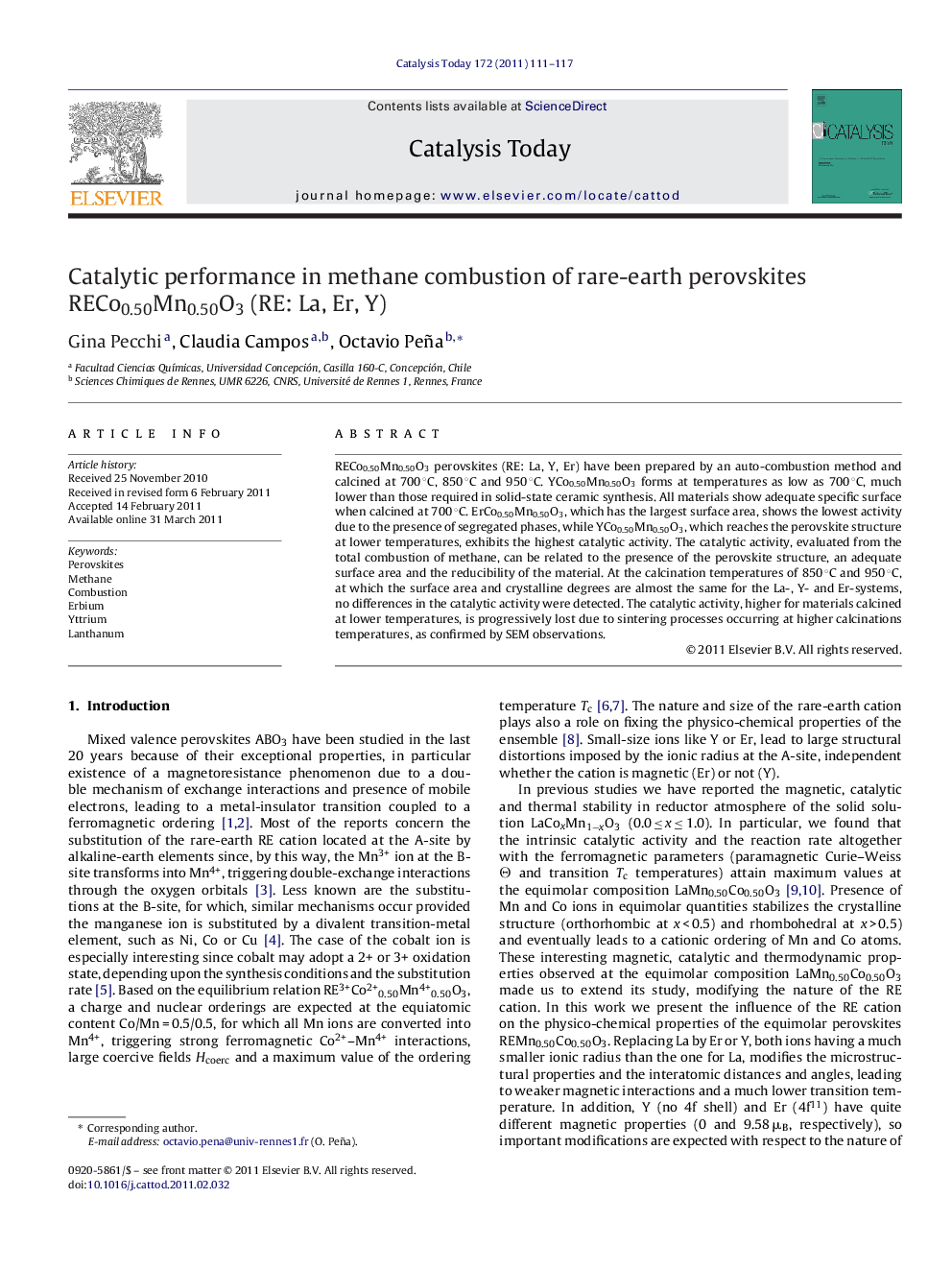| Article ID | Journal | Published Year | Pages | File Type |
|---|---|---|---|---|
| 55693 | Catalysis Today | 2011 | 7 Pages |
RECo0.50Mn0.50O3 perovskites (RE: La, Y, Er) have been prepared by an auto-combustion method and calcined at 700 °C, 850 °C and 950 °C. YCo0.50Mn0.50O3 forms at temperatures as low as 700 °C, much lower than those required in solid-state ceramic synthesis. All materials show adequate specific surface when calcined at 700 °C. ErCo0.50Mn0.50O3, which has the largest surface area, shows the lowest activity due to the presence of segregated phases, while YCo0.50Mn0.50O3, which reaches the perovskite structure at lower temperatures, exhibits the highest catalytic activity. The catalytic activity, evaluated from the total combustion of methane, can be related to the presence of the perovskite structure, an adequate surface area and the reducibility of the material. At the calcination temperatures of 850 °C and 950 °C, at which the surface area and crystalline degrees are almost the same for the La-, Y- and Er-systems, no differences in the catalytic activity were detected. The catalytic activity, higher for materials calcined at lower temperatures, is progressively lost due to sintering processes occurring at higher calcinations temperatures, as confirmed by SEM observations.
Graphical abstractThe catalytic activity can be related to the presence of the perovskite structure, adequate surface area and the reducibility of the material. It is progressively lost due to a sintering process, which occurs when the material is calcined at higher temperature.Figure optionsDownload full-size imageDownload high-quality image (162 K)Download as PowerPoint slideHighlights► The ErCo0.50Mn0.50O3 calcined at 700 °C exhibits the lowest catalytic activity. ► Segregated phases are detected for ErCo0.50Mn0.50O3. ► YCo0.50Mn0.50O3 perovskite calcined at 700 °C exhibits the higher catalytic activity. ► For catalysts calcined at 850 °C and 950 °C there are no differences in the catalytic activity.
